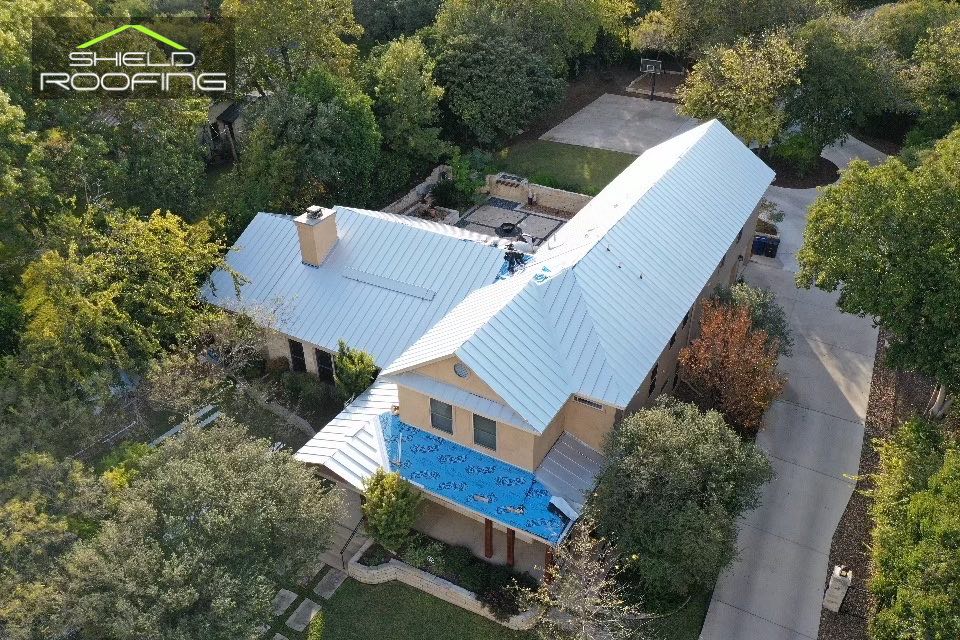Roofing has come a long way since its primitive beginnings, and the future of roofing promises to take us even further.
From advances in technology to innovations in design, there are many trends that deserve attention when considering the future of roofing materials.
This article will explore those trends and discuss how they can be applied to residential and commercial structures alike.
The benefits of staying current with the latest developments in roofing extend far beyond aesthetics. Innovations in this field allow for greater energy efficiency, improved durability, and cost-effectiveness as well.
Sustainable Roofing Materials
In recent years, there has been an increased focus on sustainability and the environment in roofing materials. As a result of this shift, green roofs are becoming increasingly popular among homeowners and businesses alike.
Green roofs are designed to reduce energy costs through improved insulation and air quality, while providing natural habitats for wildlife. Additionally, these installations can often be made from recycled materials such as plastic bottles, rubber tires, or even discarded roofing tiles.
The use of sustainable roofing materials is not only beneficial for the environment but also provides economical advantages. In addition to reducing energy bills associated with heating and cooling due to their improved insulation properties, they can also help increase property value when installed correctly on a home or business.
Furthermore, many local governments offer incentives to those who install green roofs such as tax credits or subsidies that ultimately offset the cost of installation.
Solar Roof Tiles
Solar roof tiles are an increasingly popular choice for homeowners looking to reduce their carbon footprint and save on energy costs.
Solar roof tiles provide the same aesthetic appeal of traditional roofing materials, while at the same time harnessing solar energy to create electricity that can be used in your home.
While historically expensive, recent technological advances have made them more affordable than ever before, with many governments offering incentives and tax credits to encourage homeowners to make use of renewable energy sources.
In addition, a number of companies now offer financing solutions specifically tailored towards solar projects, making it easier than ever to turn your home into an energy-efficient powerhouse.
These solutions often involve no money down as well as low interest rates over extended repayment periods.
As such, switching from traditional roofing material to solar roof tiles is becoming not only a viable option but also one that makes economic sense due to long-term savings on utility bills.
Cool Roofs
The development of cool roofs is an increasingly popular trend in the roofing industry.
Cool roofs are designed to reflect sunlight and absorb less heat than regular or traditional roofs, resulting in lower indoor temperatures during hot weather.
This type of roofing can be applied to both residential and commercial structures, reducing energy costs while providing a more sustainable solution for buildings.
Green roofs and living roofs have become particularly popular due to their ability to incorporate vegetation into the structure, improving air quality and providing insulation benefits.
The use of such systems also reduces stormwater runoff, as water is absorbed by the soil below and plants on top.
Moreover, green roofs provide numerous environmental benefits including carbon sequestration, improved biodiversity and mitigation of urban heat islands.
As more people look for eco-friendly alternatives when it comes to roofing materials, these types of solutions offer a viable option that has the potential to revolutionize the future of roofing.
Lightweight Roofing Solutions
The morning sun casts its warm, vibrant rays on the city skyline, and with each new day comes a sense of hope for a more sustainable future.
As we continue to move towards an eco-friendly lifestyle, it is becoming increasingly important to consider innovative roofing solutions that are not only aesthetically pleasing but also offer superior thermal efficiency.
One such solution is lightweight roofing materials, which boast green insulation properties as well as other environmental benefits.
Lightweight roofs can provide significant energy savings by reducing cooling costs in warmer climates and increasing heating efficiency during colder months – all while maintaining their strength and durability over time.
Additionally, these types of roofs require less maintenance than traditional shingle or tile alternatives, making them a cost-effective option for homeowners looking to reduce their carbon footprint.
Lightweight roofing systems have become increasingly popular among architects and contractors due to their flexibility and versatility when designing modern homes.
By utilizing advanced technologies such as reflective coatings and specialized waterproof membranes, these roofs can help create beautiful spaces while still providing optimal protection from extreme weather conditions.
Roof Coatings
The roof is an integral part of any building, acting as a protective shield against the elements. As such, proper roof maintenance and repairs are essential to ensure that this most crucial component continues to do its job for years to come.
One way in which roofs can be maintained and improved upon is through the use of coatings – specialized products designed to protect and extend the life of a roof by providing extra layers of protection from water, UV rays, and other environmental factors. Roof coatings offer many advantages over traditional methods of repair, including cost savings on labor costs and improved energy efficiency. Furthermore, they provide superior waterproofing capabilities that help reduce risk of damage due to leaks or standing water.
In addition, these coatings also serve as reflective surfaces that deflect heat away from buildings during hot summer months to keep them cooler inside. All these features make roof coatings a great option for those looking to improve their property’s durability while saving money at the same time.
In terms of longevity and effectiveness, it is important to note that not all roof coatings are created equal; some may last longer than others depending on how often they are applied and what kinds of materials were used in their construction. Additionally, certain brands may require more frequent application than others in order to maintain optimal performance levels throughout their lifespan.
Metal Roofing Systems
Metal roofing systems have become increasingly popular in recent years due to their noise reduction and energy efficiency. Metal materials are able to absorb sound, making them ideal for reducing the loudness of rain on a roof, as well as potentially improving insulation properties.
Additionally, metal roofs can reflect solar radiation, which helps reduce the amount of heat that enters into a home or building. This is beneficial from an energy perspective, since it helps keep buildings cooler during summer months without having to rely heavily on air conditioning units.
Metal roofing also comes with several design options such as standing seam panels, corrugated sheets, and stone-coated steel tiles. These different designs allow homeowners and architects to select the best option that fits both aesthetically and functionally within their desired project.
Rubber Roofing Systems
Rubber roofing systems have become increasingly popular in recent years due to their inherent advantages.
Synthetic rubber and recycled rubber are two primary components used for the construction of these roofs, which can effectively provide protection from adverse weather conditions as well as reduce energy costs by providing insulation.
The use of synthetic rubber provides a strong base layer that is highly resistant to extreme temperatures, while the addition of recycled rubber gives it an added level of protection against moisture.
In addition, this type of roofing material is also extremely lightweight, making installation easier and quicker than with more traditional materials such as asphalt shingle or metal.
Furthermore, rubber roofing systems require minimal maintenance over time and typically come with long-term warranties.
This combination of benefits makes rubber roofing systems an ideal choice for homeowners looking to upgrade their existing roof or construct a new one.
Not only do they offer superior performance compared to other types of roofing materials but they are also environmentally friendly due to their low carbon footprint thanks to the use of recycled materials.
Conclusion
As the roofing industry continues to expand and evolve, new sustainable materials and solutions are becoming available.
By using solar tiles, cool roofs, lightweight solutions, coatings, metal systems and rubber roofing products, homeowners can reduce their energy bills while also protecting the environment.
These innovations in roofing present a great opportunity for those looking to modernize their home or business with an eye towards sustainability.
With these advancements in technology, it is essential that all stakeholders remain informed on current trends within the roofing industry so they can make educated decisions when selecting a material that best fits their needs.


